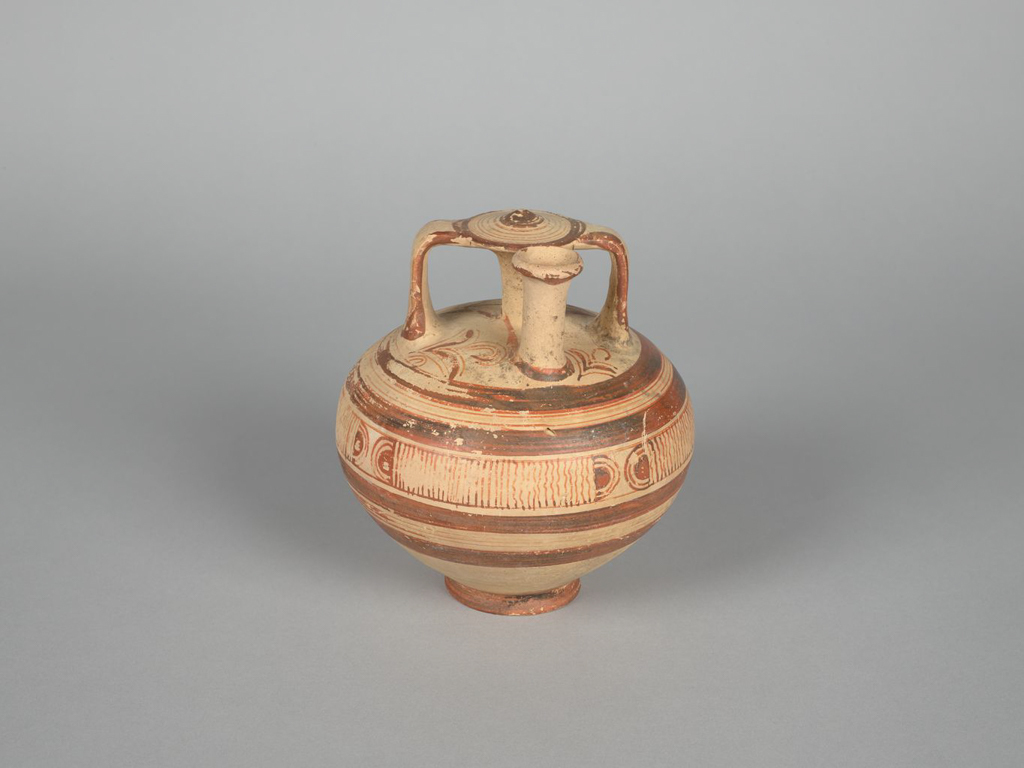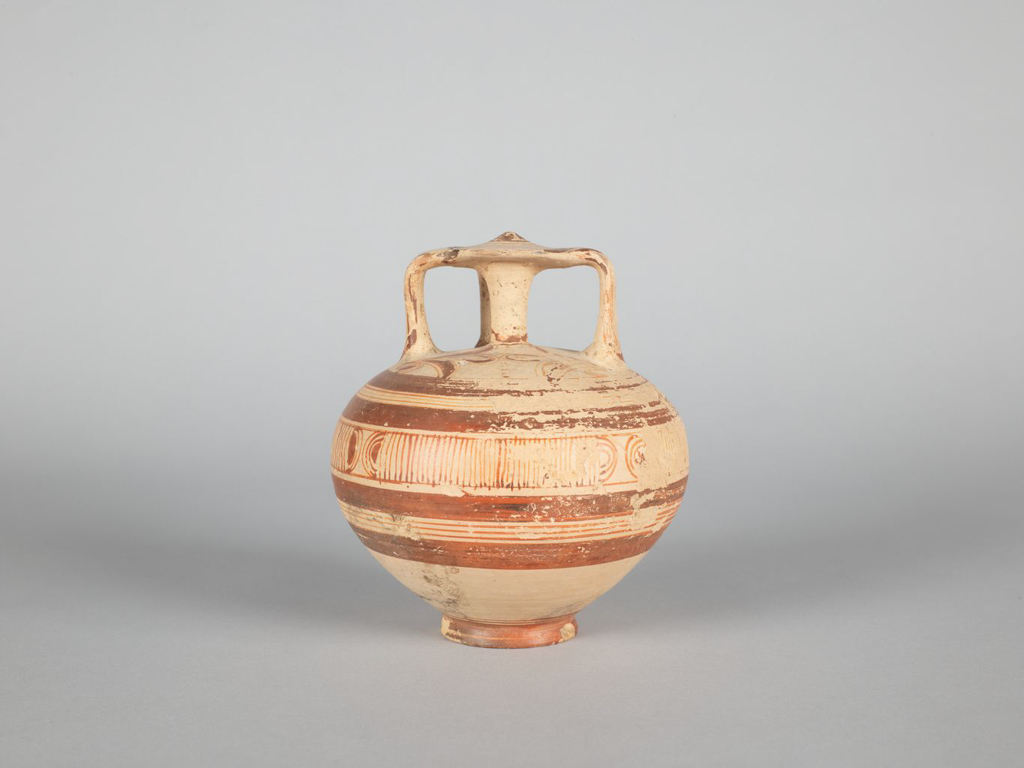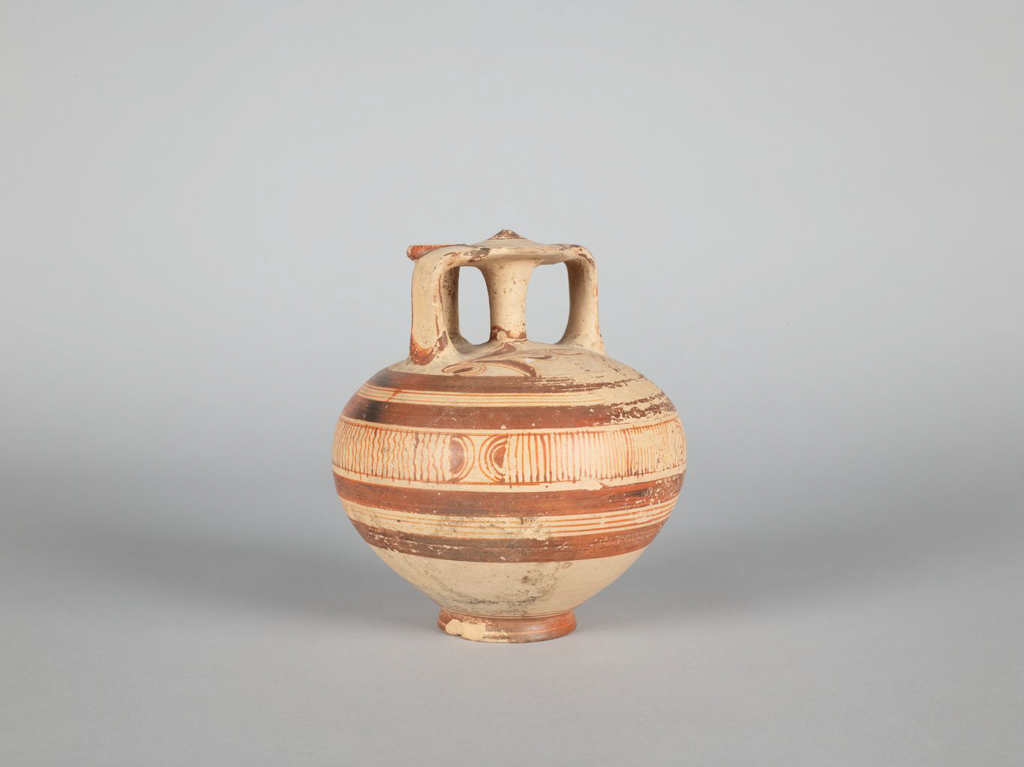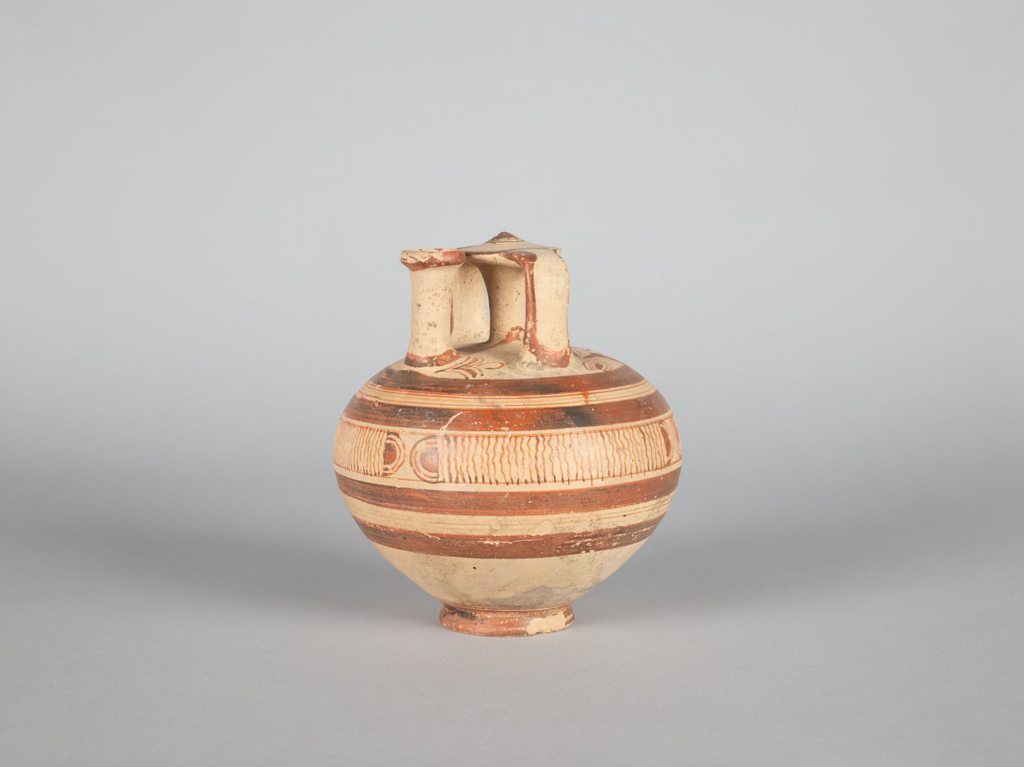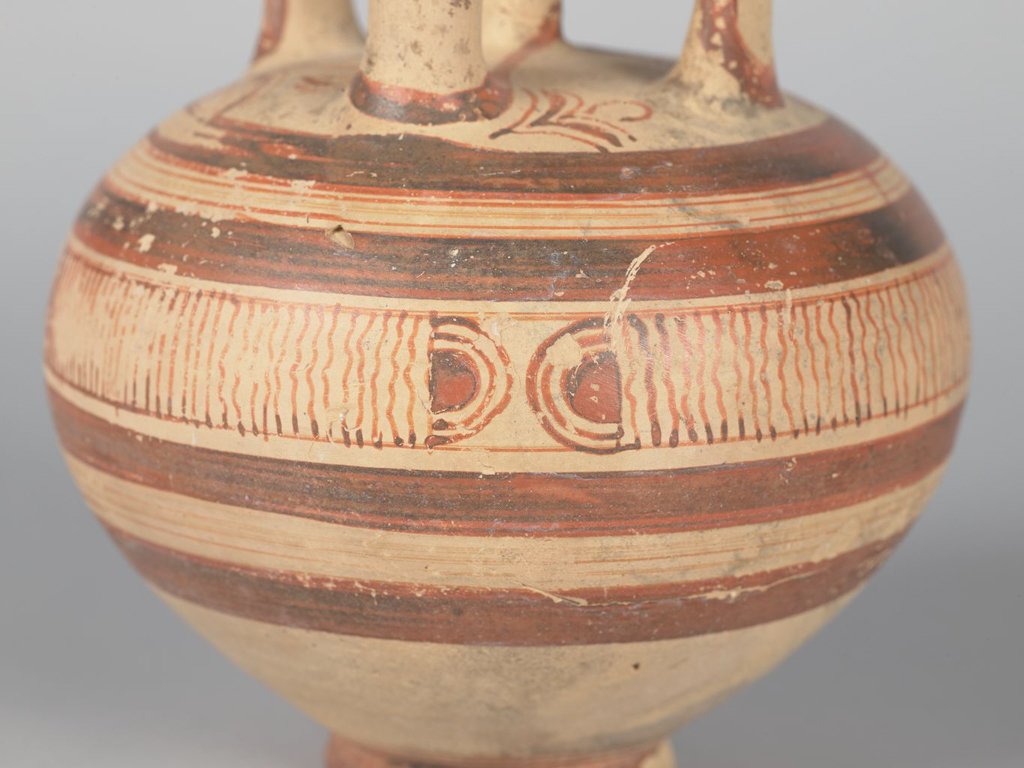Ancient Greek
Mycenaean
Stirrup Jar, 1340-1190 BCE
Late Helladic IIIB or IIIC1
Terracotta
6 7/8 × 6 ¼ × 6 1/8 in. (17.5 × 15.9 × 15.6 cm)
3-D Object/Sculpture
1965-16 DJ
Learn More
This two-handled jar belongs to a class of objects known as “stirrup jars.” They are named for the distinctive pair of handles joined to a false neck, sometimes with a domed top like on this example, that are reminiscent of a pair of stirrups. Additionally, stirrup jars have another functional pouring spout on the shoulder. Medium-sized vessels, such as this one, have been found in domestic and funerary contexts, presumed to hold either wine or oil. The monochrome decoration on this jar features geometric designs–including wavy lines, horizontal bands, and semi-circles–that are common motifs in Mycenaean pottery. Arne Furumark, a Swedish archaeologist studied Mycenean pottery in depth and developed a specific typology, published in his book The Mycenaean Pottery: Analysis and Classification (1941). This vase, with its globular body, can be identified as Furumark’s shape 175. The shape and the decorative schema place it being produced about 1340-1190 BCE, a period known as the Late Helladic IIIB or IIIC (Early), or the Palatial Period. During this time, Mycenaean pottery was produced at various sites across Greece and the Aegean.
Related collections and exhibitions
